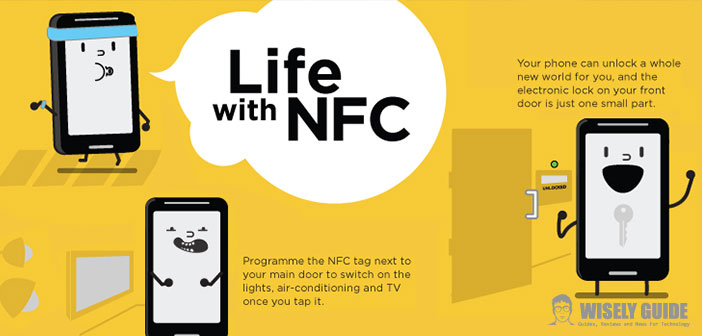There is much talk of NFC in the world of mobile technology in recent years, but actually. What is it? Let’s find unveiling in all its qualities. It is not very difficult these days, go to the ball orienting all technologies emerging every day.
On data-transfer technologies, in particular, there go crazy if you talk to on a PC astronomical terms such as IDE, SATA, Thunderbolt, USB, and HDMI, on smartphones and tablets, there is a different situation: if once was the infrared, today we find ourselves oriented with terms such as Bluetooth, Wi-Fi, Wi-Fi Direct, DLNA, infrared (again!), NFC. And it is the latter stands the subject of this focus particularly focused novice users.
What is NFC? While it is not strictly necessary to know, let’s start with a little curiosity: NFC stands for Near Field Communication, a radio communications technology that has its roots in studies dating back twenty years ago, but already materialized in the first only in 2006 with the first tentative experiments with this smartphone connectivity from Nokia. It is a communication standard very special communicates wirelessly with another NFC device to speed pretty low and close distance, two characteristics that, rather than quality, could be seen as limitations. So exactly what is this NFC?
The highlight for NFC which is worth to be adopted by manufacturer’s respect the particularity with which the NFC devices communicate among themselves through simple contact NFC module for each device. This translates, in practice, in the simple act of making a touch device on the body of the other.
And so, everything is ready. The undeniable advantage is not having to go through tedious and cumbersome procedure’s Wireless Association. Bluetooth, for example, needs to make an initial scan for Bluetooth’s devices in the area, and then let the user choose which device is to be retrieved for communication. Especially in crowded places and in situations where you do not really want to understand this process, the data exchange Bluetooth can give boredom, unlike the simple human contact between two objects.

NFC services based on it.
NFC-based services are many, and they work quite differently. The most important is Android Beam, which is available on all Android devices ” pure ” (therefore with little or no customization of a manufacturer): it allows you to exchange information with other small Android devices approaching two devices with NFC enabled. Files can be varied: from a contact card to a link, locations maps and more. With Android 4.1, the exchange has become NFC Bluetooth, enabling a fast transfer of files size is important, such as photos, videos and music.
The latest design of Android Beam (NFC with which acts as a simple system of ” pairing ” of the two communicating devices) is taken from the beginning in S-Beam, service offered exclusively by Samsung in its devices with Android OS. S-Beam, unlike the previous one, transfer files by creating a Wi-Fi Direct connection between the two devices, enabling faster file transfers. If anyone is wondering now if Android Beam-Beam and S are compatible with each other, the answer is simple: they are not. Fortunately, though, the Samsung devices also have the ability to use Android Beam.
But that’s not all, because NFC is capable of interfacing with a large number of products on the market: one thinks, for example, to NFC tag that often houses like Sony make available within the packaging of its products. These are small objects that, once approached the device, allowing it to behave pre-set. For example, we may place a tag ” silent ” on the nightstand next to the bed. By placing your smartphone close to it, it automatically goes into a silent mode. The uses are already so many, even complex ideas and see how the camera smartphone Sony QX-10 (and its higher model QX-100), which use NFC to quickly access the camera app.
Future prospects and doubts.
NFC is a system of communication that, in recent years, has been the subject of many ideas. Bring your own device to bus ticket machine to pay with your credit card is just one of the fanciful ideas proposed in recent times. Much is being done on the side of payments via mobile phone: the idea of using their smartphones to pay the bill in a shop has always fascinated me, but it still smacks of a system that is able to give the right stimulus to retailers in order to be adopted. To clear the way he sees NFC as a communication system for large quantities of data, due to the slow transfer speed: simply, NFC will be used hereafter as a trivial system to connect two devices quickly, preventing you from having to manually connect through methods less intuitive.
There is also a problem rather concrete concerning this technology, which is not linked to the ridiculous speed with which the data are transferred. The biggest problem that prevents NFC to flourish today is, in the opinion of this writer, inadequate support from manufacturers of smartphones.
Although you can justify the lower-end devices, that link everything to the lower cost of production, there are devices like the rumored Apple’s popular iPhone that are missing altogether NFC module. Probably, Apple fails to give confidence to the NFC, preferring to stay away.
But even if there was a greater base of NFC modules, there remains the problem of creating a system that can get them to talk to all devices with whatever second language only. And it is very unlikely that all device manufacturers will be able to agree on this, at least in the short term.

